By the end of the eighteenth century, the two largest fur trading companies in North America-the Hudson’s Bay Company (HBC, headquartered in London) and the North West Company (Nor’westers, headquartered in Montreal) were vying with each other to establish trading relations with the Blackfoot. With their homelands stretching along the eastern slope of the Rocky Mountains, the Indian tribes of the Blackfoot Confederacy (South Piegan, North Peigan, Kainai (Blood), and Siksika) were in prime beaver territory.
In 1807, Meriwether Lewis and William Clark returned to St. Louis from their journey across North America with reports of the vast wealth of beaver in the Rocky Mountain area. At least a dozen fur companies were almost immediately organized to go up the Missouri River and establish trade with the Blackfoot. None were successful: the Blackfoot, with a reputation as being a fierce and warlike people, did not look favorably upon the American fur traders who were invading their land.
In 1846, Alexander Culbertson and his wife Natawista (the daughter of Blood chief Two Suns) established Fort Benton at a site favorable for trade with the Blackfoot. By this time, the European market demand for beaver was basically dead and the 60 million beaver which had inhabited the headwaters of the Missouri River in 1800 were now almost extinct. On the other hand, the market demand for buffalo robes was strong, and the Blackfoot were located in prime buffalo country.
Today there is a modern replica of Old Fort Benton on the original site-the original blockhouse has been incorporated into it. The warehouse in the Old Fort Benton is dedicated to displays on the Blackfoot Fur Trade. Photographs of these exhibits are shown below.
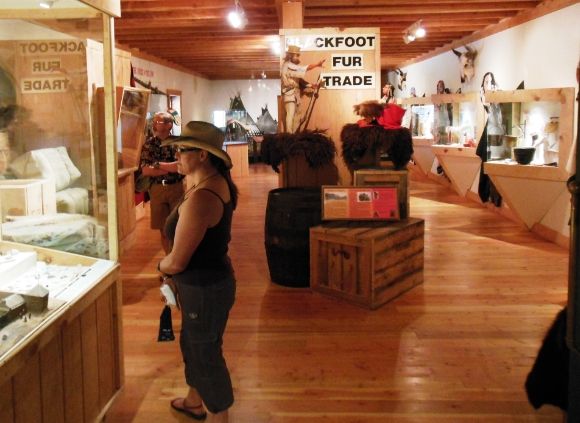
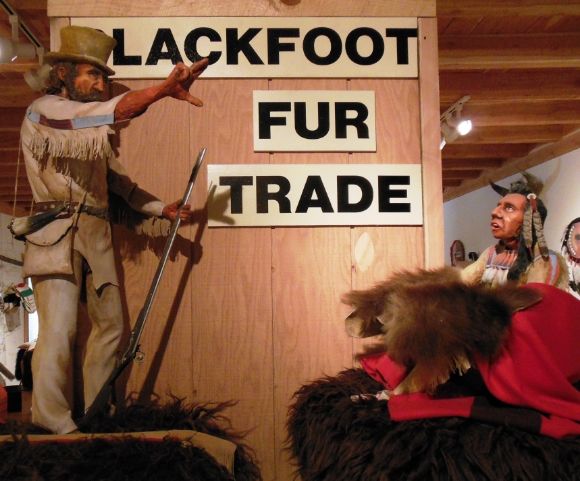
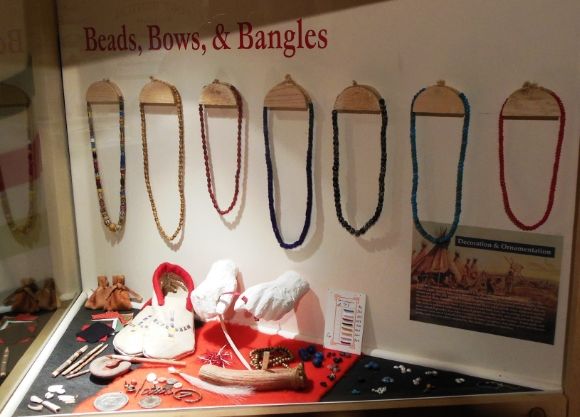
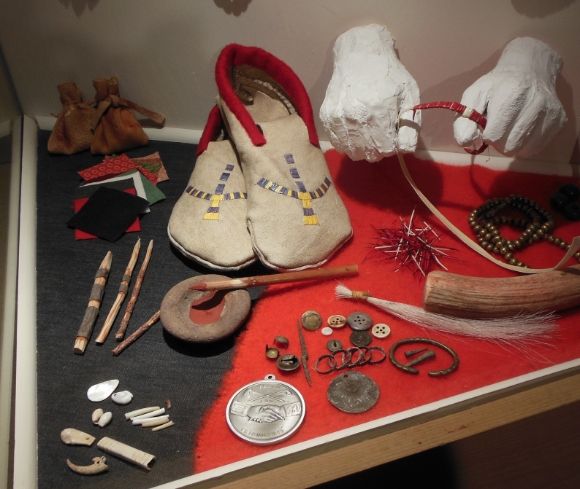
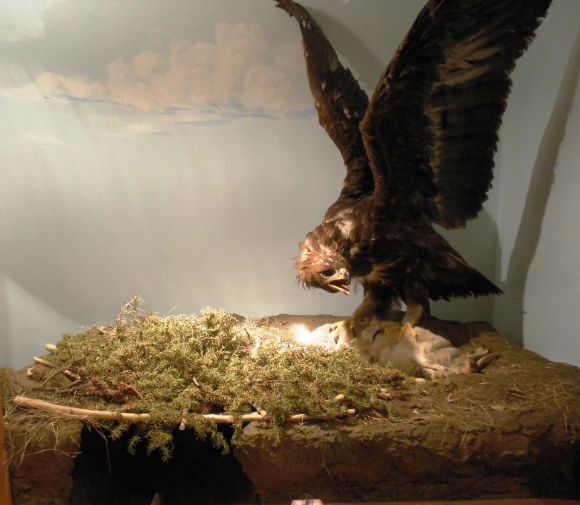
Shown above is a display showing how the Blackfoot captured eagles. The trap was baited with a dead rabbit. The hunter then waited concealed in a hole for the eagle to come to the bait. According to the explanation on the display:
“Golden eagle feathers were used by the Blackfoot for ceremonial regalia. Tail and wing feathers were collected by grabbing the eagle by the legs, pulling it into a hole and crushing it. It was high risk work, with injury from beak and talons almost a certainty.”
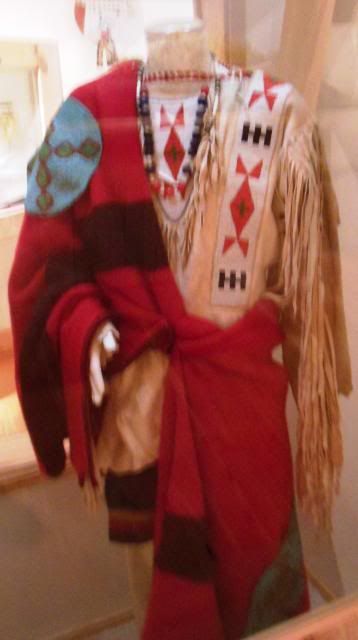
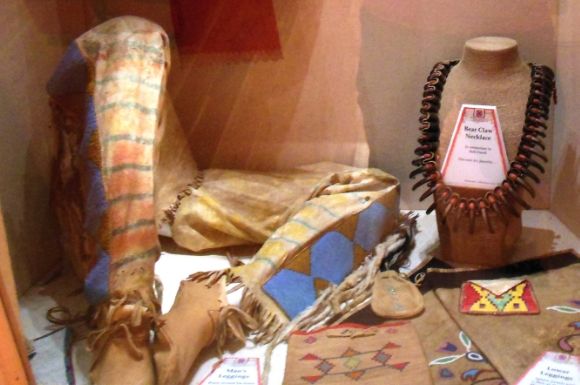
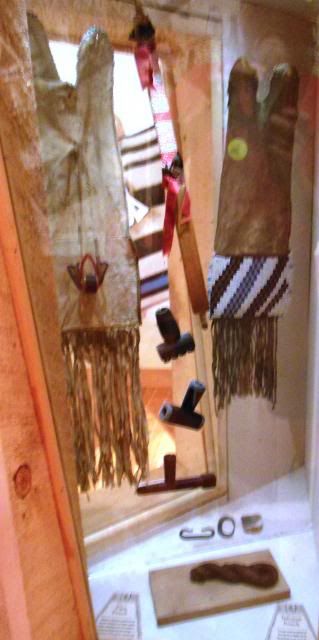
Shown above is a display of stone pipe bowls. The pipe is an important part of Blackfoot spirituality.
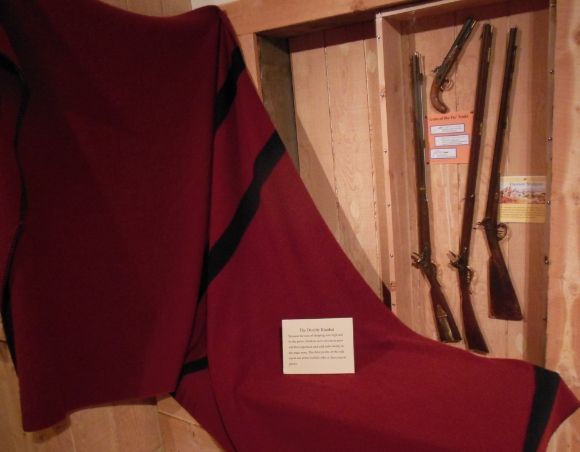
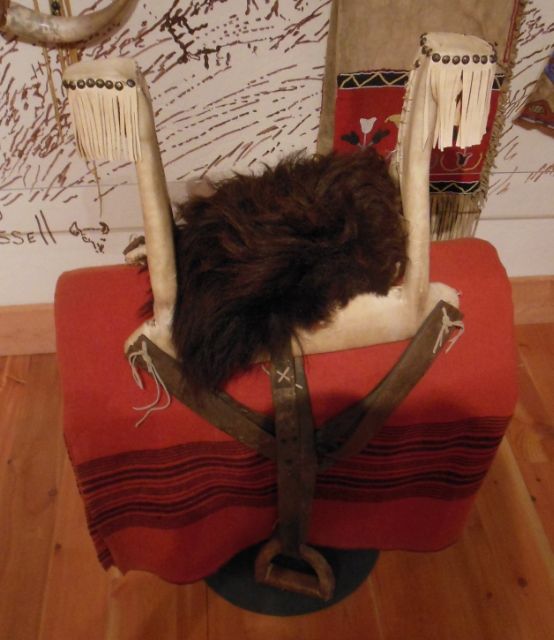
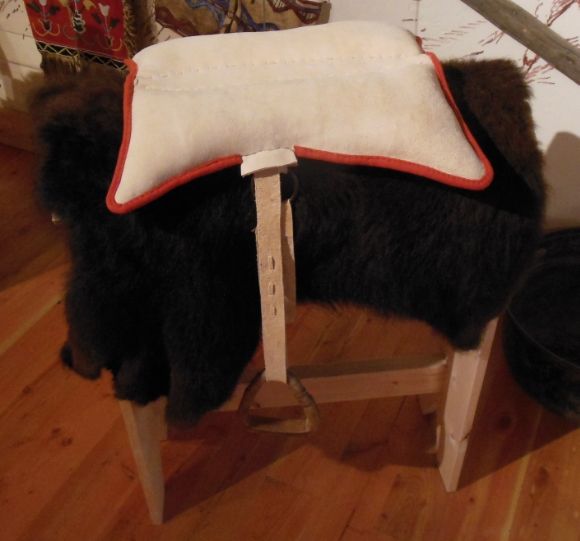
Shown above are Indian saddles. While there is a popular stereotype perpetuated by Hollywood movies that Indians rode bareback, in reality they not only used saddles, but also made them.
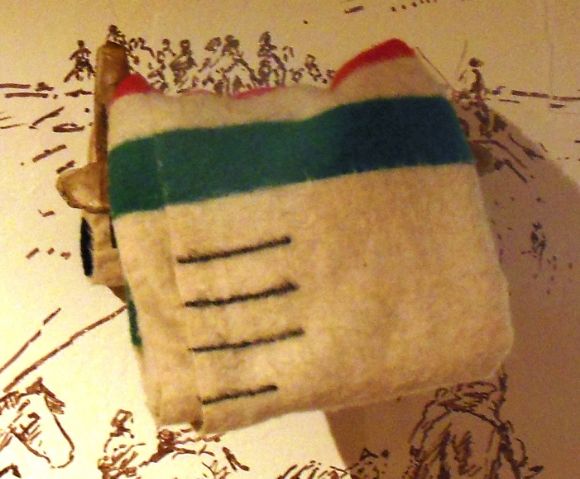
Shown above is a Hudson’s Bay Blanket, a very popular Indian trade item which was introduced in 1740. Each short line or “point” woven into the edge of the blanket indicated the number of beaver pelts to be exchanged for the blanket.
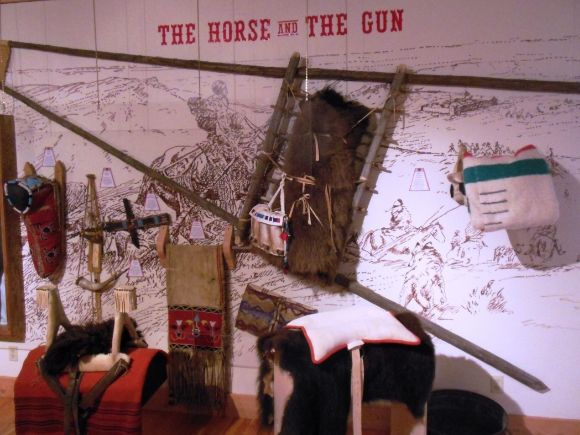
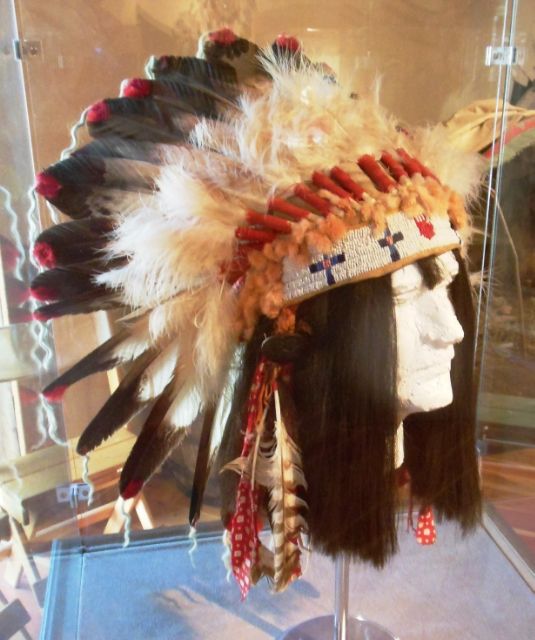
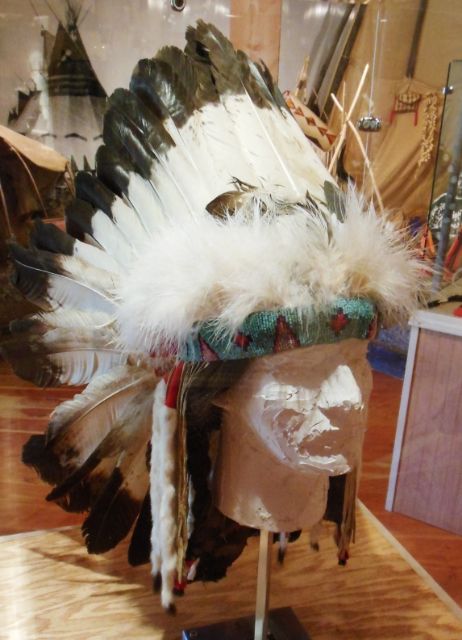
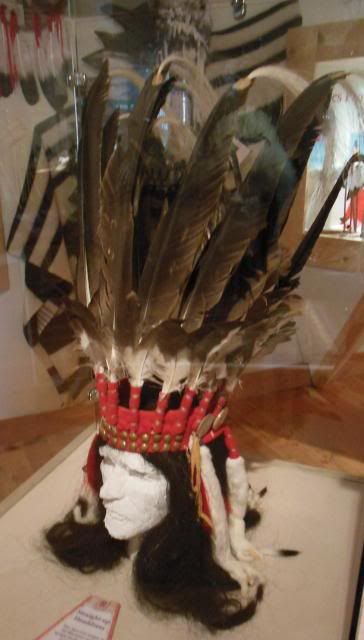
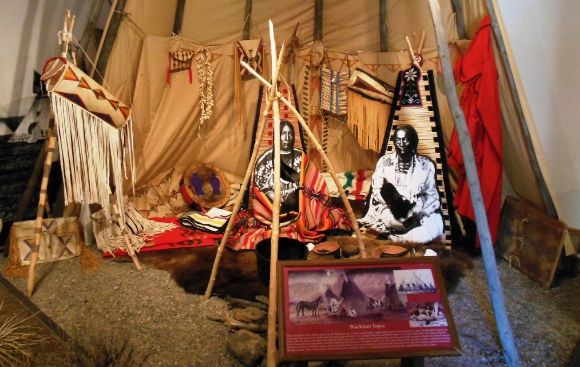
Shown above is a display showing the inside of a tipi.
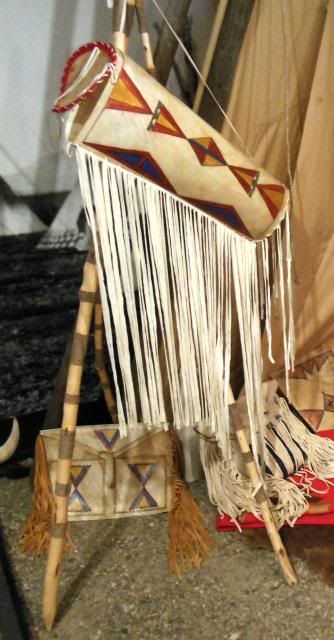
Shown above is a medicine bundle. The bundle contains items which symbolize the individual’s personal spiritual power.
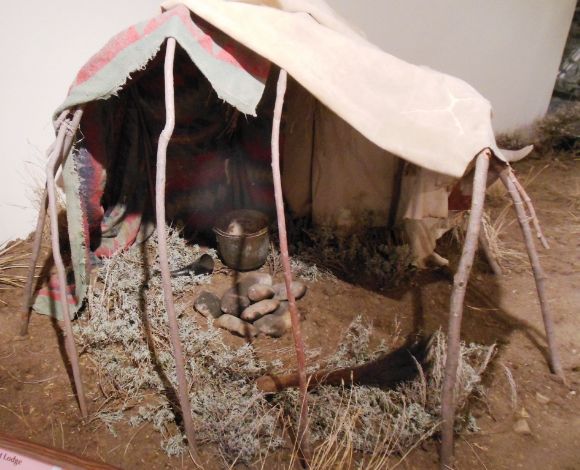
Shown above is a display of a sweat lodge. The sweat lodge is an important part of Plains Indian ceremony. The small lodge is heated using rocks which have been “cooked” in a nearby fire until they are red hot. Within the lodge, water is sprinkled on the rocks to create steam.
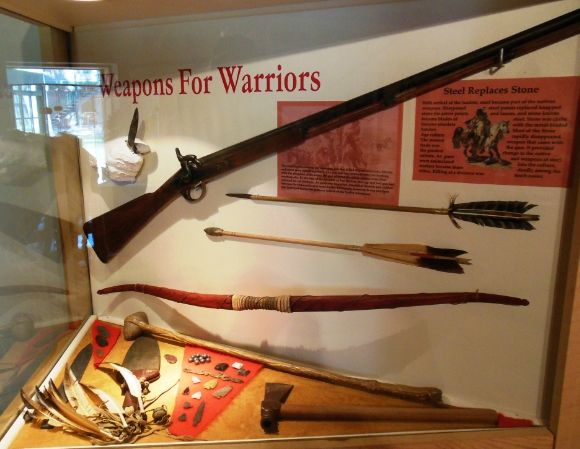
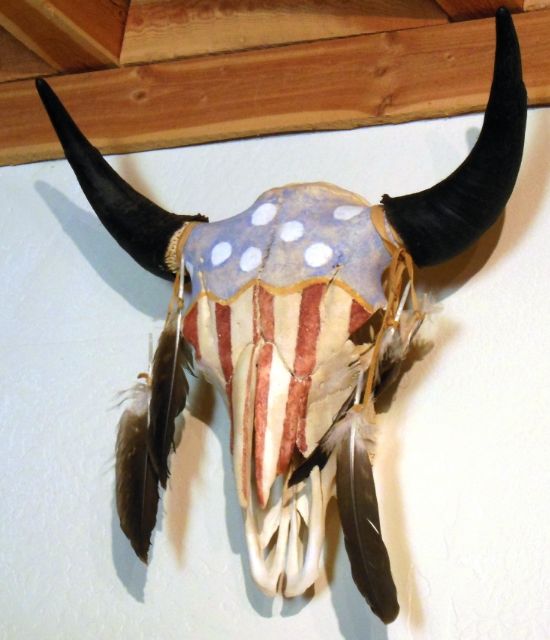
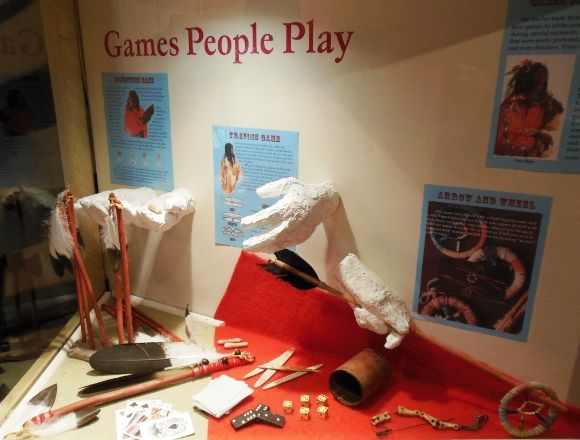
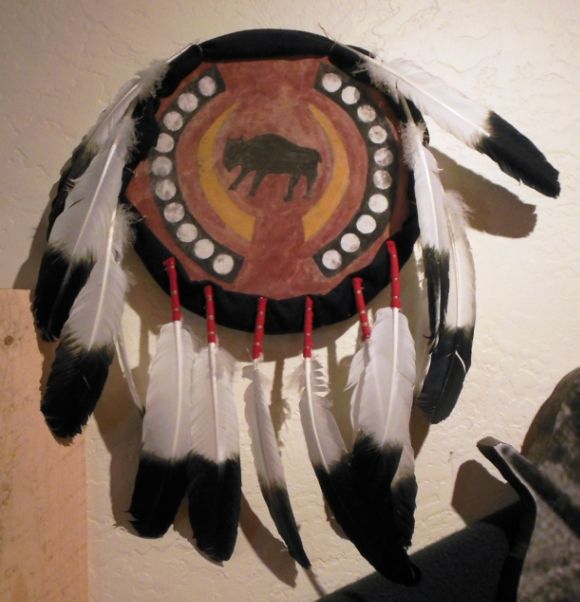
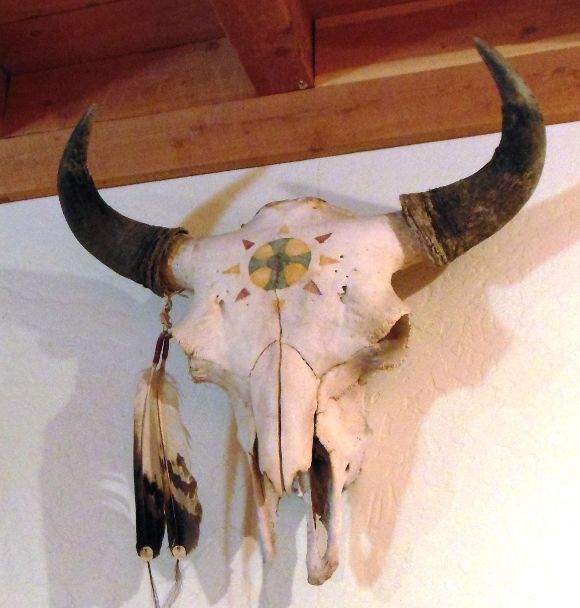
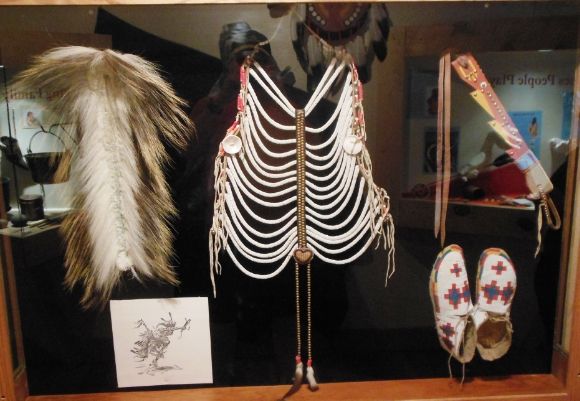
Shown above is a grass dance outfit which belonged to the Indian artist William Standing. According to the display:
“The legend of the Grass Dance began when a mighty warrior had a vision that carried him to a spacious lodge in the sky. The warrior found only a large white rooster inside the lodge. The rooster instructed him in the ways of the new dance and ordered him to take the knowledge back to his people to unify and bring them closer together. The costume consists of a headdress representing the comb of the white rooster, rightly decorated moccasins, and a whipstock made of wood and rawhide lashes which was used during the dance to punish the unruly.”
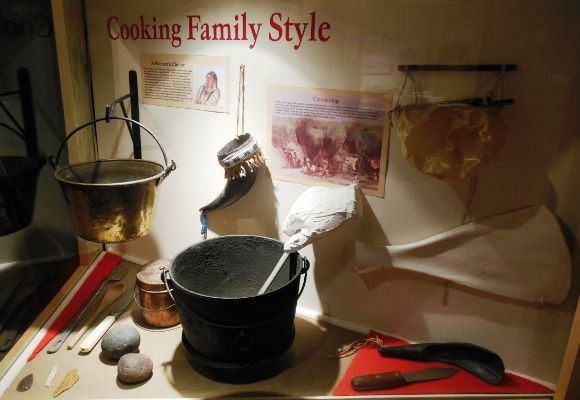
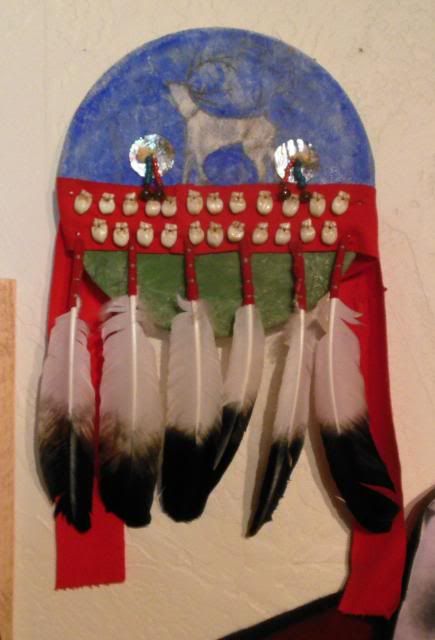
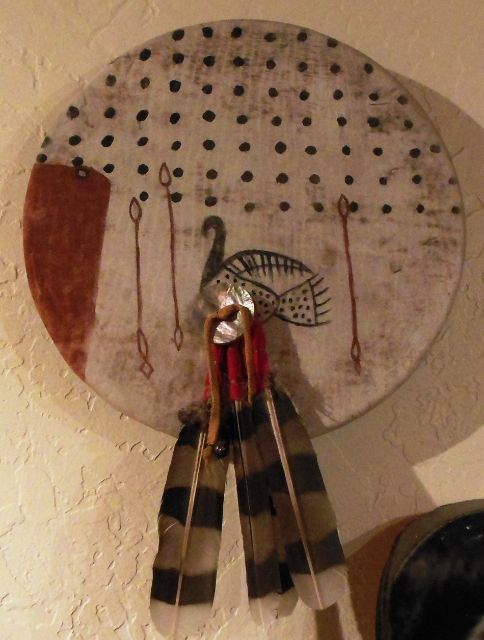
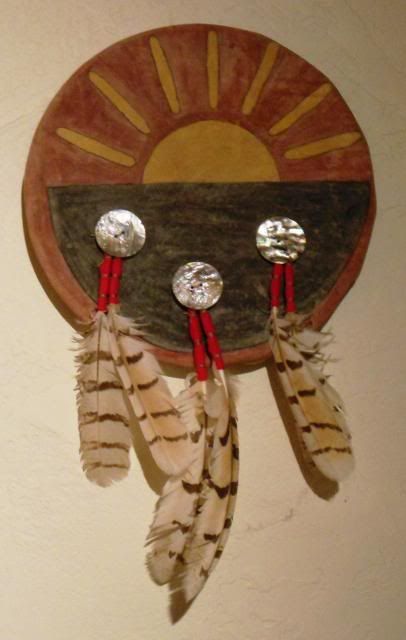
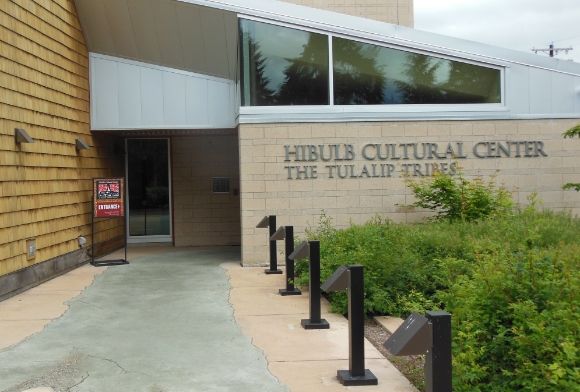
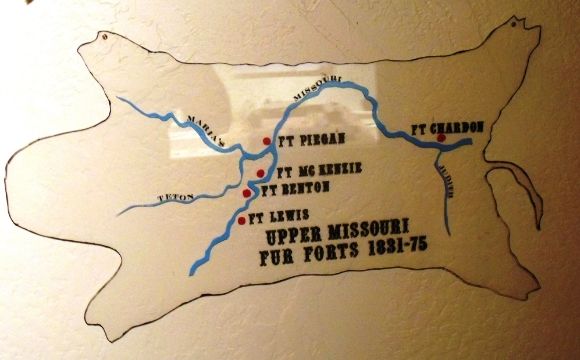
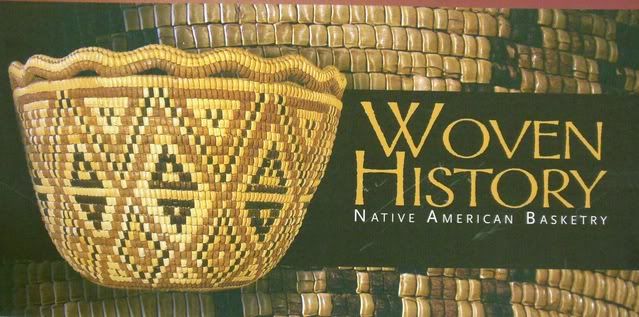
Leave a Reply